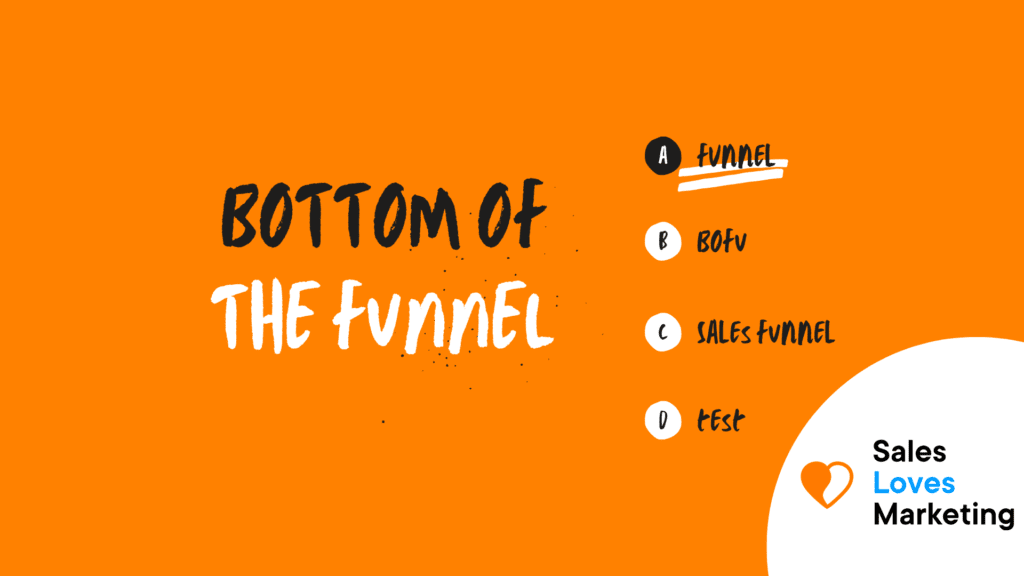What Bottom of the Funnel means? (BOFU)
The bottom of the funnel in marketing terms is used to define the final stage of the journey that potential customers make through the buying process, which leaves them ready to decide whether to purchase a product or service.
It should be noted that there are different ways to classify the stages of the marketing funnel, one of the best known is the following: Top of the Funnel (TOFU), Middle of the Funnel (MOFU), Bottom of the funnel (BOFU), the latter being the stage in which potential customers can become customers or buyers.
Why is the Difference between Marketing Funnel and Sales Funnel?
These two terms are often confused with each other, so it is important to point out the difference:
In the marketing funnel or conversion funnel, advertising and marketing actions are carried out to capture visitors, give them useful and relevant information to convert them into leads and then divide and group them according to the opportunities to sell a product or service.
Once this information is collected, it is passed from the marketing funnel to the sales team that will show business opportunities.
In the sales funnel case, the sales funnel receives qualified leads from the marketing team and performs various tasks to convert them into effective customers.
These include different processes such as diagnosis, proposals, negotiations, among others.

Tactics To Increase Conversions at the Bottom of the Funnel.
Today some strategies can be implemented to help improve conversions at the bottom of a company’s funnel either by leveraging paid media, forming alliances, or creating product or service promotions.
Some of them are mentioned below:
Paid media.
- Remarketing.
Among the paid media to influence the bottom of the Funnel is taking advantage of remarketing audiences. This can be done by using lists or URLs in paid social networks and search.
To do this, you must first generate audiences; some ways to do this are:
- Direct users to another tab after filling out the purchase form, such as a “thank you” tab.
- You can also obtain information through data collected with an advertising campaign previously carried out in the social network Facebook.
- Through Linkedin.
- With the use of e-mails or some contact information, they can be mapped on paid platforms.
Once the audiences are generated, ads can be created, and the audience can be selected and targeted.
- Search campaigns.
Another paid media strategy to influence potential customers at the bottom of the funnel is to include audiences within search campaigns. The offer can be adjusted to ensure it is displayed at the top or to target only users searching for specific terms.
Promotions.
Several promotional strategies can be used to increase conversions at the bottom of the funnel; among the most commonly used are:
- Promotional codes.
When users already know the product or service that the company sells and know its value, you can offer promotional codes or discounts to get closer to them.
- Additional sales.
You can make use of advertisements in paid media to offer users additional sales of products or services.
Business development representatives.
Hiring additional sales associates is another strategy that can help expand the number of potential customers and greatly enhance the company’s growth.
Use of product-integrated tools.
There are various tools on the market that integrate with the product or service offered and can help web applications and businesses make it easier to approach and convert existing customers or users.
How do You Know if Marketing at the Bottom of the Funnel is Working?
A simple way to know if a marketing campaign at the bottom of the funnel is working is if the conversion rate increases month over month and sales revenue reflects this.
To make a broader analysis and know what aspects can be improved, it is recommended to check if the following metrics are going up:
- The total amount of purchases.
- Profit per lead.
- Testing records or requests for product or service demonstrations.
- Return on investment.
And/or if these values are decreasing:
- Shopping cart abandonment.
- Cost per lead
